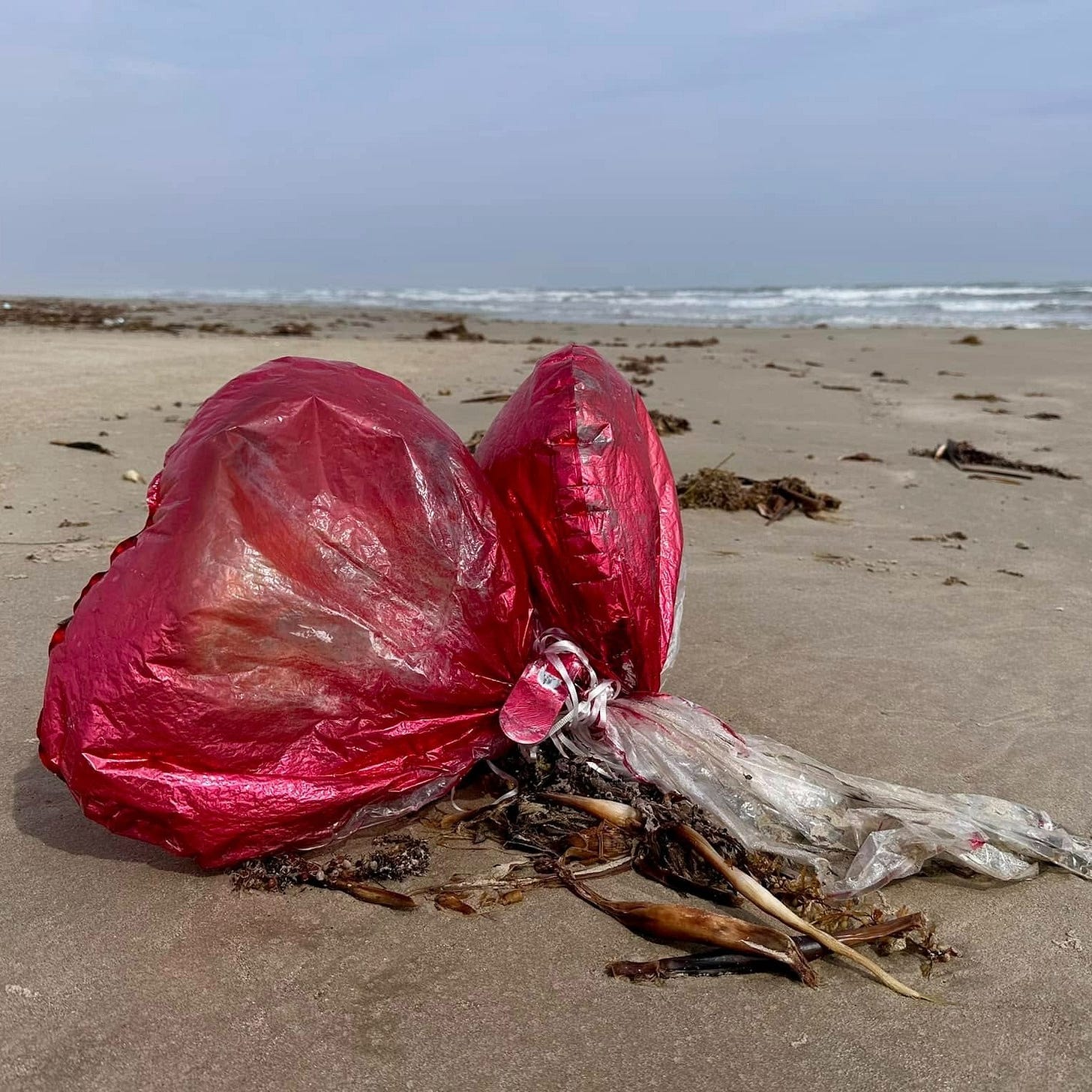
Man and Mother Nature (ok, mostly man) are messing with Texas beaches and threatening sea life in the Gulf. Scientific surveys confirm that more trash washes up on Texas beaches than anywhere else in the Gulf, due to the prevailing "Loop Current" shown on the map below.
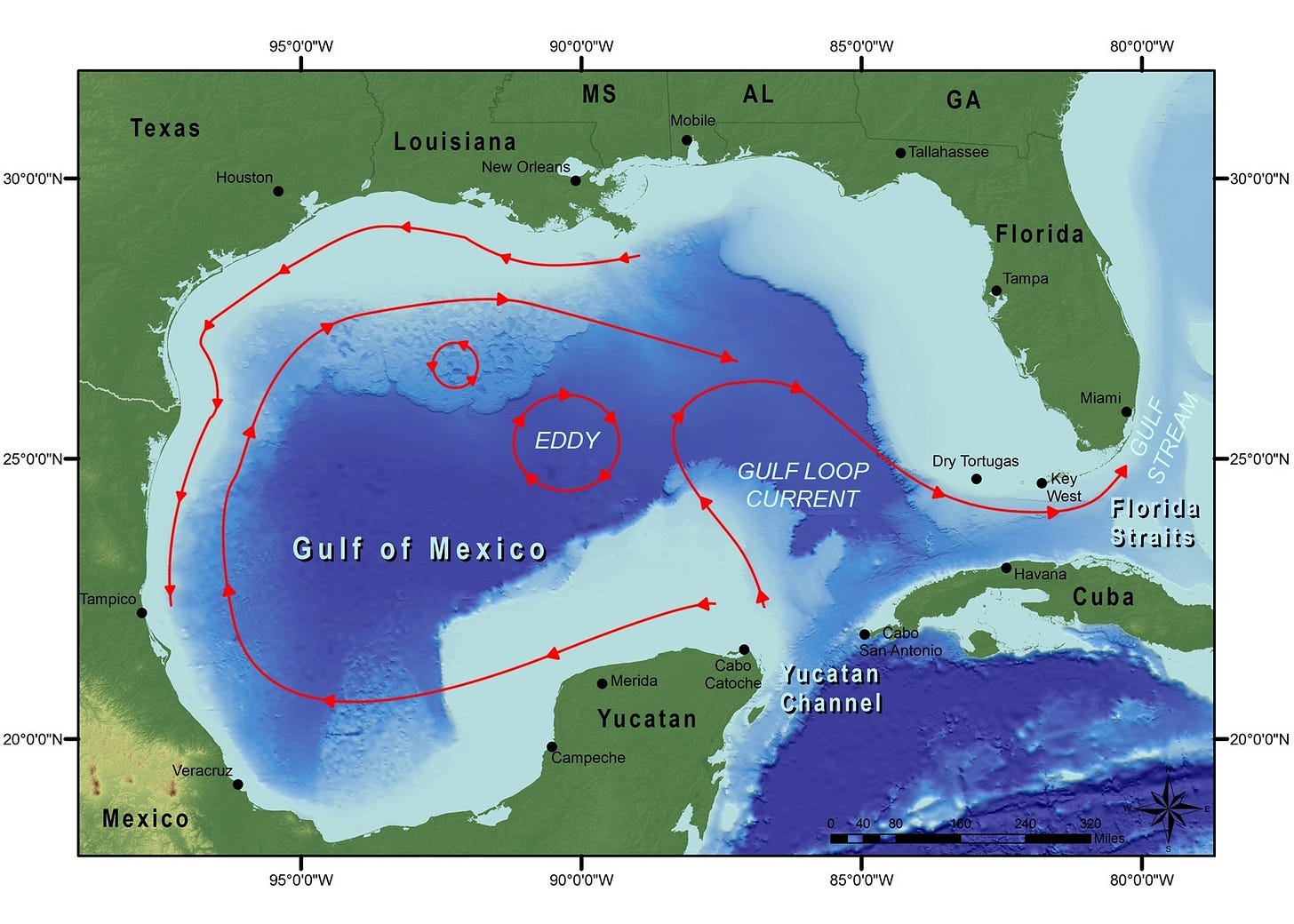
Among the Marine Scientists studying the trashing of the Gulf and Texas beaches, one name frequently surfaces: Jace Tunnell of the Harte Research Institute (HRI) at Texas A&M - Corpus Christi. Tens of thousands of people follow his weekly beachcombing finds on HRI's Facebook page or watch his videos of Padre Island beach finds on HRI's YouTube channel. He reaches thousands more through his South Texas newspaper columns & a weekly public radio show broadcast along the coast from Victoria to Brownsville.
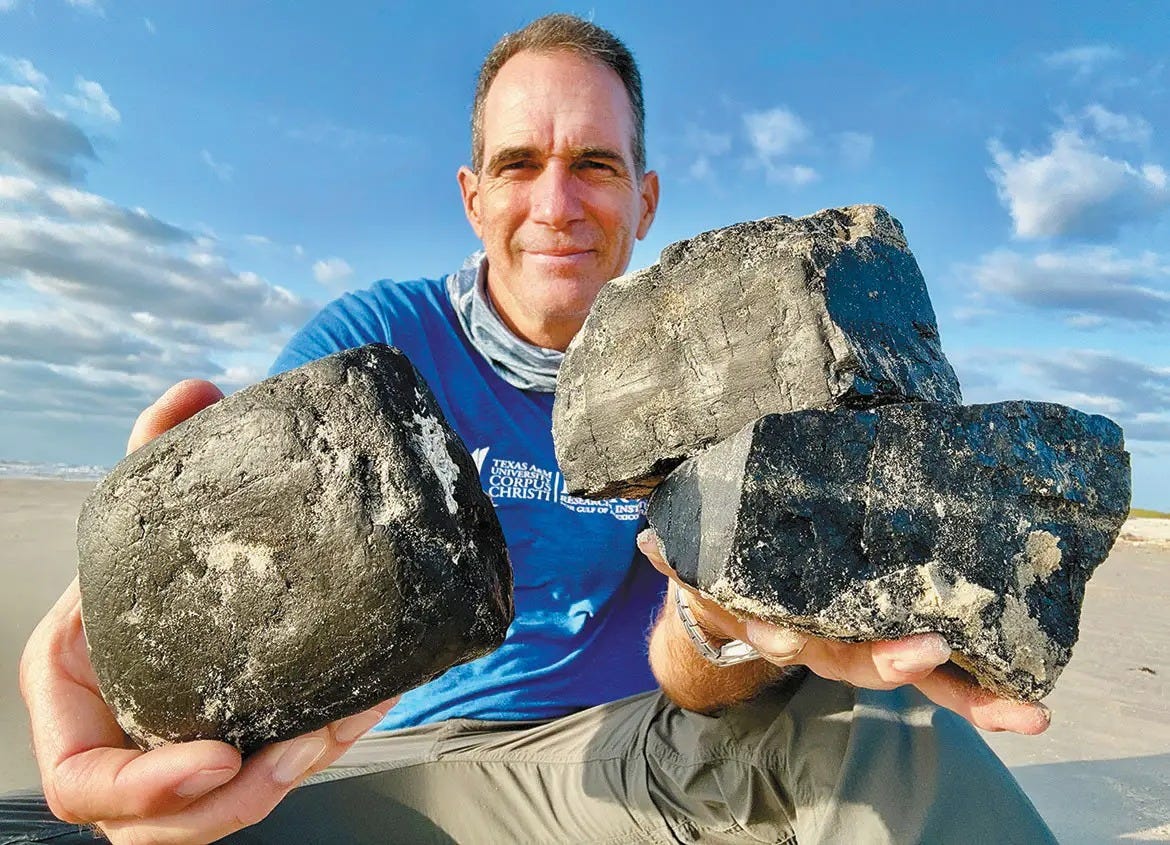
It's no wonder that Texas Monthly named him "The Beachcombing King of Texas " last year. Many finds tell a story—like the coal (seen in the photo above) from the wreck of a 19th-century steamship that washed ashore on Padre Island last year or the bales of raw rubber (seen in the photo below) that also frequently wash ashore from a German ship the US Navy sunk off Brazil during World War Two.

But Tunnell is most concerned about the recent manmade objects he has found on Texas beaches, which threaten marine life in the Gulf and the wildlife on Padre Island. Chief among his concerns are small objects he frequently finds that most beachgoers have probably walked by without noticing: Nurdles.
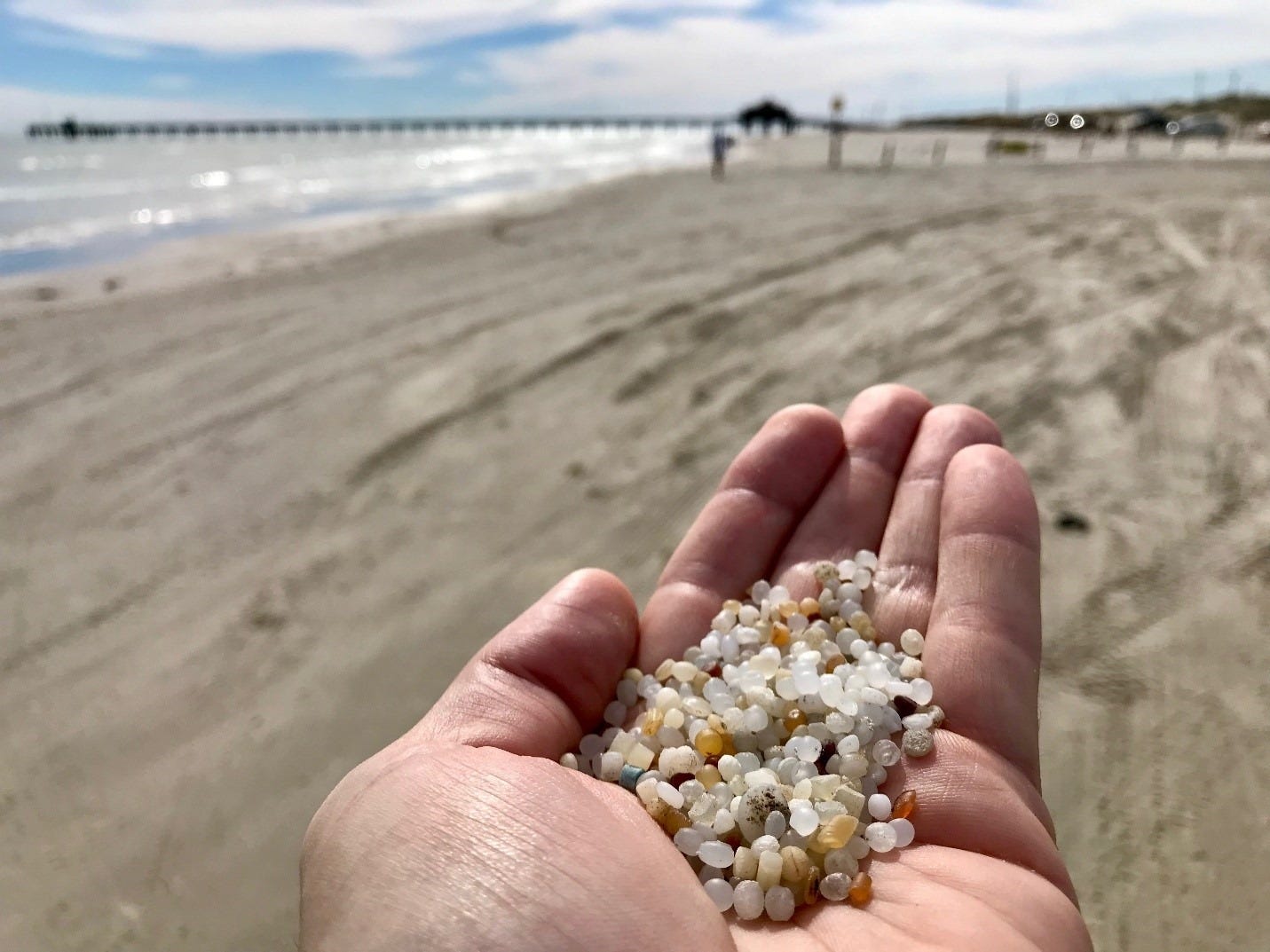
Nurdles are raw plastic pellets used by manufacturers to make common items like water bottles, soda bottles, and grocery sacks. When they enter the Gulf or float up on Texas beaches, sea life and beach wildlife can mistake them for fish eggs, a common food source. This can be fatal to fish and wildlife.
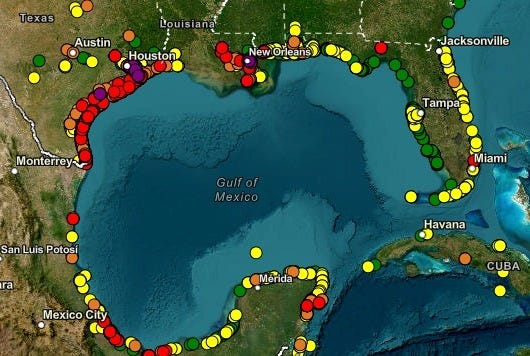
Tunnell has documented how widespread these plastic bits are through an organization he founded called "Nurdle Patrol." Based on data from beach surveys conducted by volunteer citizen scientists, nurdlepatrol.org has produced a dynamic map (seen above) that shows the highest concentrations of nurdles on Gulf beaches (represented by red dots) are being found in Texas.
Beyond raw materials like nurdles, Tunnell regularly finds finished plastic products that also pose a danger to sea life. Chief among these are plastic mylar balloons (seen in a photo at the top of this article), which - to sea turtles - look an awful lot like jellyfish (a common food source) after they deflate and descend into the water.
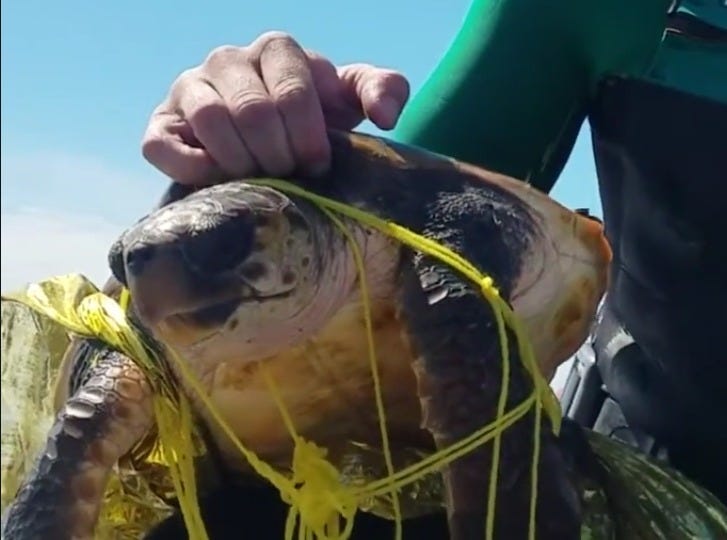
Tunnell regularly finds plastic bottles covered in Sea Turtle bite marks (like those seen in the photos below) washing ashore on Padre Island. One of the bottles pictured once contained Clorox, while another was marked "disinfectant," neither of which is safe for the turtles to consume.
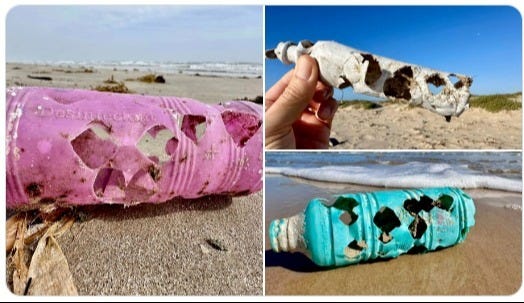
Other worrisome (and regular) finds on Padre Island that wash ashore from the Gulf of Mexico include large chemical barrels (seen in the photos below), many of which sport Haz-Mat labels. These barrels pose a danger not just to ocean sealife or beach wildlife but also to anyone who might happen upon them. Tunnell warns anyone who spots one to stay clear and alert authorities to their discovery.
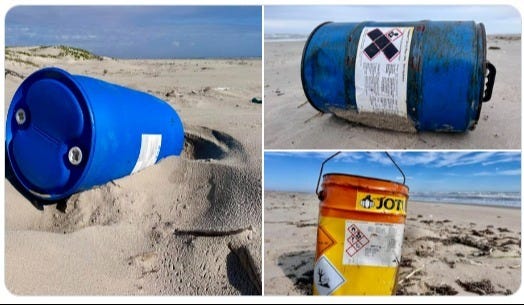
More worrisome still are some recent finds Tunnell began reporting in late March 2025: medical waste in the form of vials that appear to contain bodily fluids and a syringe, all of which Tunnell says he collected on North Padre (but he is also aware of reports of these vials being found on South Padre Island).
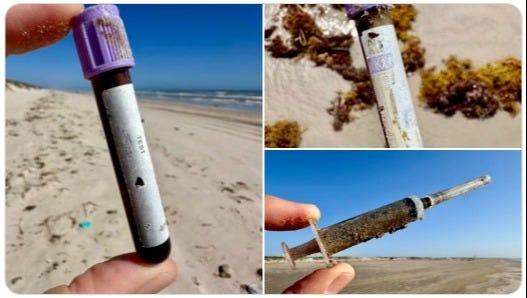
If these beach finds make you concerned for your safety when planning a trip to Padre Island, bear in mind that Tunnell regularly surveys a wide range of the North Padre Island beaches, including remote stretches of the Padre Island National Seashore that are infrequently visited by tourists.
Just be aware of your surroundings, and watch out for the natural hazards you are most likely to encounter, like our very colorful Portuguese man-of-war (seen in the photos below), which packs a painful sting. It's best to admire these from a distance!
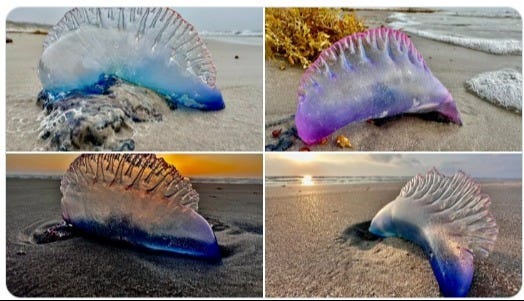
Plus, if you deprive yourself of a visit to beautiful Padre Island, you might miss a surprising scene like the one Tunnell captured in the photo below when he spotted a while-tail-deer watching him from the dune line!
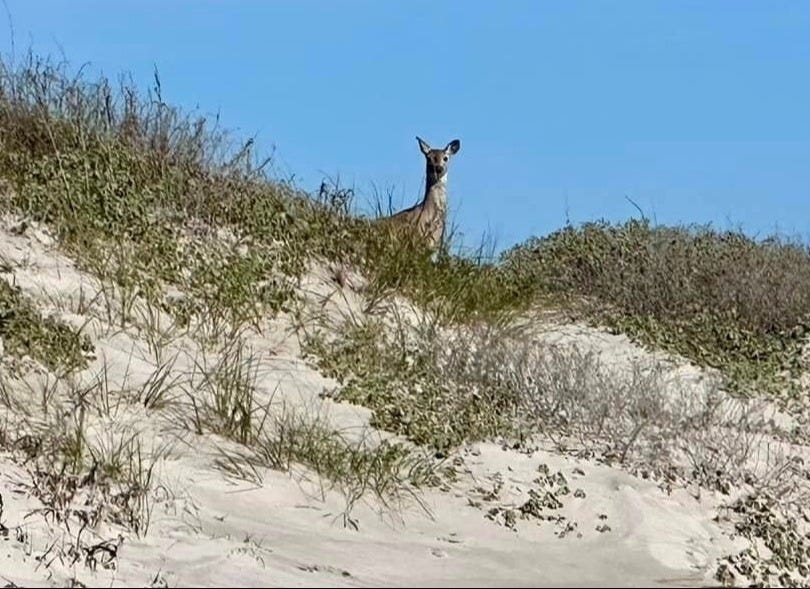
Should more be done to protect the Gulf and Padre Island ecosystems?
Share your opinion in the comments to this article.
Abrazos,
Jack Beavers





A serious problem with a simply stated solution: pay to keep the beaches cleaned. It gets harder from that point, but there's more than one solution path once that decision is made.